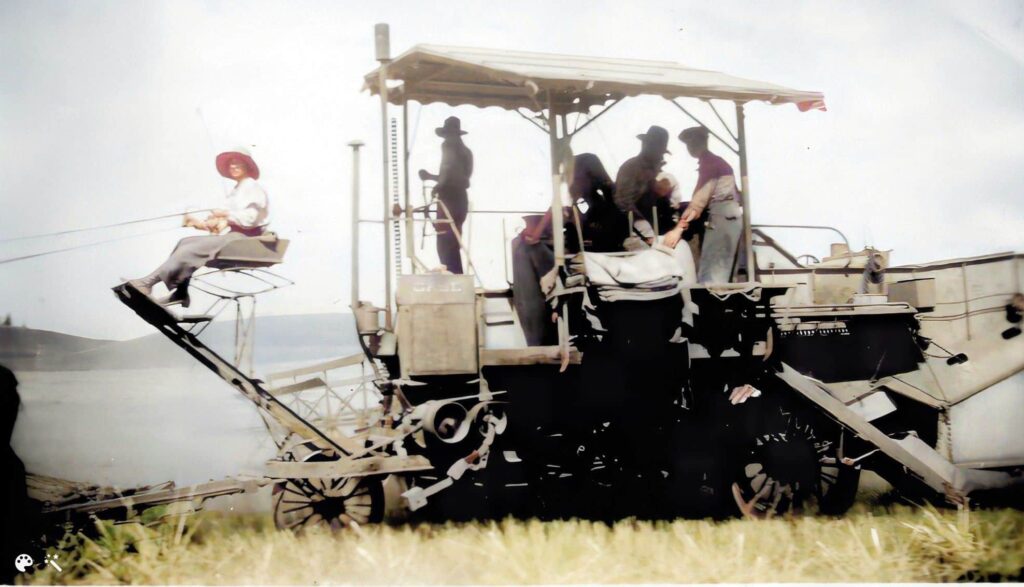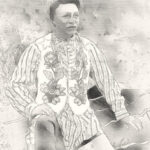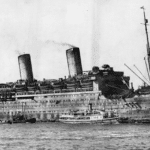Teenager, Ida Showalter driving, Floyd “Buster” Showalter tending header, Fred McKinley sewing sacks, and Eldo Miller jigging sacks in this photo from about 1930.
The combine harvester saved time and personnel at harvest time. The three videos below will give you an overview of the evolution of wheat harvesting on the Palouse, as well as a closer look as the combine-harvester of the 1930s in action.
This 1987 film uses still photos and film to document the evolution of farming techniques in Washington state’s Palouse region. It was written and produced by Washington State University’s Keith Williams and narrated by Burt Harrison.
Farming on the Palouse in 1938, using a horse-drawn combine. Filmed by Leonard Young for Washington State University. This silent film was digitized and uploaded at Manuscripts, Archives, and Special Collections, Washington State University from a film held in the WSU Libraries (Pullman, Washington).
Have you ever seen a combine harvester pulled by 33 horses or mules? From the 1900s through the 1930s, this was a common sight in Eastern Washington’s wheatfields during harvest season. This video, produced by Fort Walla Walla museum volunteer Arline Kerns in the early 1990s, includes footage of the combine in action.
The combine was a groundbreaking advancement at the time, the combination of a stationary thresher and push header, which reduced crew size and sped up the process. A specialized Shandoney hitch distributed the weight equally between the 33 animals and allowed them to haul the heavy piece of equipment over the hilly terrain.
Visitors to Fort Walla Walla Museum will see an actual Harris Combine hitched to 33 mules on exhibit.

Our thanks to Washington State University and the Fort Walla Walla Museum.





